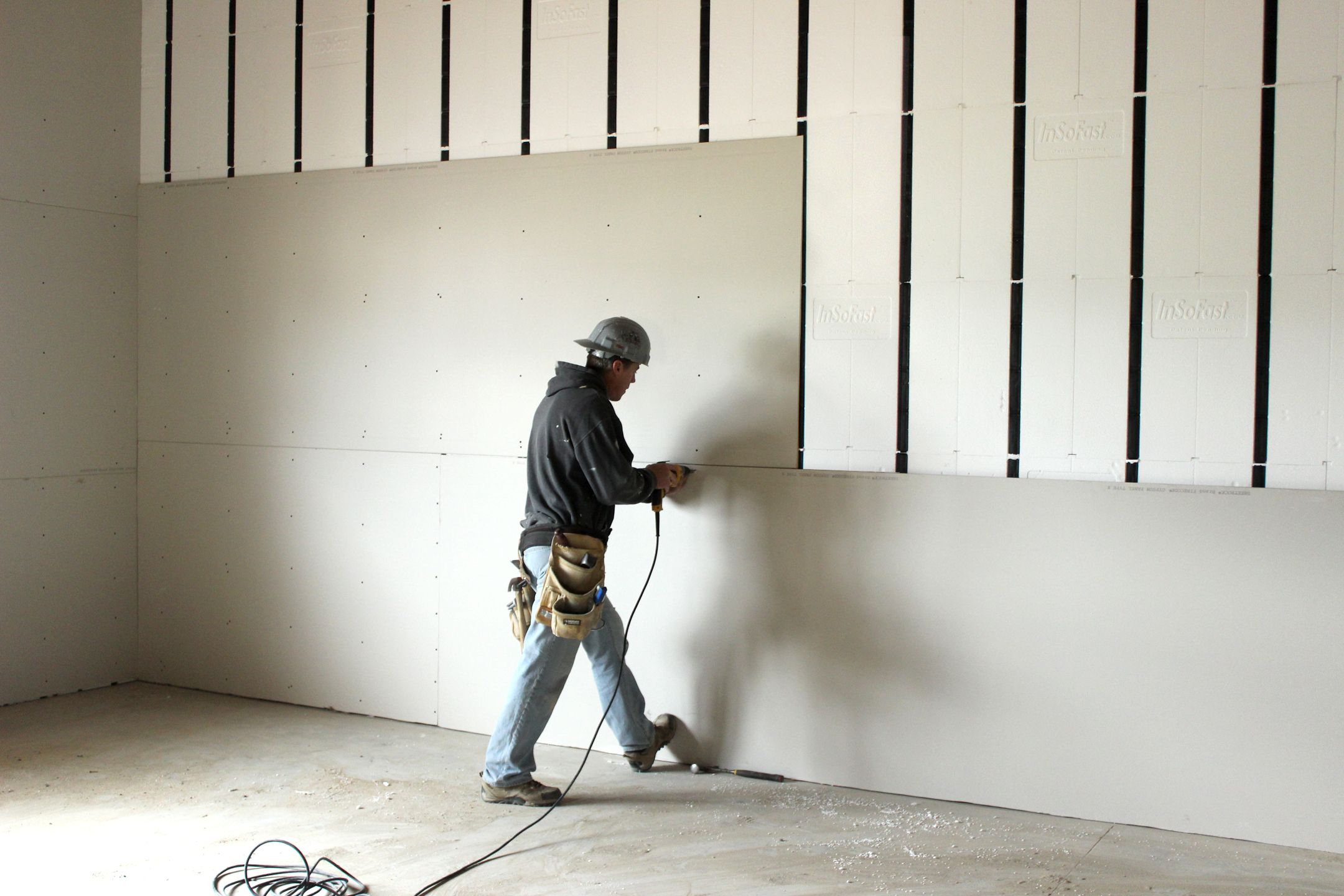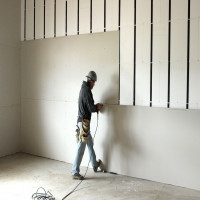What Is Dry Lining? A Complete Overview

Strong 8k brings an ultra-HD IPTV experience to your living room and your pocket.
Transforming interior spaces often demands efficiency, visual appeal, and cost-effectiveness. Dry lining, a popular wall-finishing technique, has emerged as a go-to solution for builders and homeowners alike. Whether you’re renovating a room or building from scratch, understanding this method can help you achieve sleek, hassle-free walls and ceilings.
This guide explores everything you need to know about dry lining, from its definition to its practical applications, advantages, and its role in Liverpool construction services.
What Is Dry Lining?
Dry lining is a method of finishing interior walls without the use of traditional wet plaster. Instead, plasterboard is fixed directly onto a surface like brick, blockwork, or metal frames using adhesive or mechanical fixings. This system allows for a clean, quick, and relatively mess-free finish compared to traditional plastering.
It's widely used in modern builds and renovations across Liverpool and the UK due to its speed and efficiency. Dry lining walls is particularly helpful in areas where time constraints or moisture control are critical. It also creates an even surface ready for painting, wallpapering, or additional insulation.
Key Benefits of Dry Lining
• Speed: Compared to traditional plastering, dry lining is quicker to install.
• Reduced Mess: The process is ‘dry,’ meaning less moisture and no need for long drying times.
• Versatility: You can dry line various surfaces, including brick, masonry, and timber.
How to Dry Line a Wall
The process of dry lining a wall can be straightforward when done by professionals or confident DIYers. Here’s a simplified step-by-step overview:
Prepare the Surface
Clear the wall of any dust, grease, or loose debris to ensure proper adhesion. If working with uneven surfaces, consider adding battens or a metal frame to create a flat base.
Fix the Plasterboard
Attach dry lining plasterboard to the wall using an adhesive like drywall compound or screws. Care must be taken to secure the panels without leaving gaps. For larger areas, a mechanical framework might be necessary to provide additional support.
Finish the Joints
Use jointing tape to cover the seams between boards. Apply a thin layer of compound, smoothing it over the tape, and sand down any rough edges after it dries. This creates a seamless finish, ready for paint or other decorative coverings.
How Does Dry Lining Work?
The principle behind drylining is simple—plasterboard panels are affixed to surfaces to create smooth, durable walls. By bypassing traditional wet plastering methods, dry lining achieves faster results with minimal disruption.
The drylining and plastering process focuses on:
Base Preparation: Ensuring the wall or structural frame is stable.
Board Attachment: Fixing plasterboard securely to achieve a smooth finish.
Sealing and Sanding: Providing a polished surface for further treatments.
This process is particularly effective for modern builds and renovations, where time and convenience are of the essence.
Dry Lining Services in Liverpool
If you’re located in Liverpool, you’ll find a range of professional dry lining services tailored to residential and commercial projects alike. From loft conversions to office renovations, Reliable Plaster Liverpool specialises in delivering flawless finishes.
Why Dry Lining in Liverpool is Popular
Liverpool’s diverse architecture demands flexible and efficient solutions. Dry lining meets this demand by:
• Accommodating rapid construction timelines.
• Providing insulation benefits when combined with thermal boards.
• Blending seamlessly with contemporary interior styles.
Types of Dry Lining
Dry lining comes in several forms, each suited to different purposes. Knowing which type to choose can make all the difference in your project’s success.
Dot and Dab Method
Plasterboard is adhered to walls using adhesive ‘dabs,’ creating an even surface. This method is ideal for relatively flat external walls.
Metal Stud Framing
For partition walls or uneven surfaces, a metal stud framework supports the plasterboard, ensuring durability.
Timber Batten Framework
This traditional approach uses wooden battens to provide a base for plasterboard fixing, suitable for insulation applications.
Dry Lining vs Plastering
Both dry lining and plastering have their pros and cons. Making an informed decision depends on your project’s needs.
Feature Dry Lining Plastering
Speed Faster to install Takes longer due to drying times
Flexibility Suited for modern, straight walls Works well on uneven surfaces
Cost Generally more affordable Can be more expensive
For most modern builds, dry lining is the preferred choice thanks to its efficiency.
Dry Lining vs Skimming
Skimming refers to applying a thin plaster layer over walls for a smooth finish. Here’s how it compares to dry lining:
• Dry Lining: Installs plasterboard directly, providing an immediate flat surface.
• Skimming: Adds a perfect finish but involves more drying time after application.
Both techniques can be combined, especially when refinishing a previously plastered surface.
Dry Lining Plasterboard
Plasterboard dry lining refers to using gypsum boards to achieve smooth, durable interiors. These boards come in various types:
• Standard Boards: For basic applications.
• Moisture-Resistant Boards: Ideal for kitchens and bathrooms.
• Thermal Boards: Improve insulation and save energy.
The versatility of plasterboard makes it an integral component of modern dry lining.
What Are the Disadvantages of Dry Lining?
While dry lining offers plenty of advantages, it’s worth considering its drawbacks:
Durability: Less robust than traditional plaster against heavy impacts.
Moisture Sensitivity: Standard plasterboard isn’t suitable for damp areas.
Hollow Sound: The ‘hollow’ effect behind boards may require additional soundproofing.
Despite these concerns, high-quality products and skilled installation mitigate most issues.
Why Choose Us? – Reliable Plaster Liverpool
Reliable Plaster Liverpool, combine experience with precision to deliver flawless drylining and plastering results. Whether it’s a small home renovation or a full-scale commercial fit-out, our expert team ensures each project is delivered on time and to the highest standards.
We use quality dry lining plasterboard and cutting-edge techniques to create smooth, ready-to-decorate surfaces. With nearly a decade of industry experience, we know exactly how to tailor each project to your space and vision. Contact us today for expert dry lining services in Liverpool.
FAQs About Dry Lining
How long does it take to dry line a room?
Dry lining a standard-sized room can take one to two days, depending on complexity and method. Dot and dab is faster, while framing and insulation may take longer.
Is dry lining as good as plastering?
For modern builds, dry lining is often preferred due to speed and finish. However, traditional plastering offers a more durable, impact-resistant surface.
How to fix dry lining?
To repair dry lining, use filler for minor holes and cracks. For larger damage, you may need to cut out and replace a section of plasterboard.
What does a dryline look like?
A drylined wall appears flat, smooth, and uniform. Once decorated, it’s nearly impossible to distinguish from a traditionally plastered wall.
What is a dry lining?
Dry lining is the method of attaching plasterboard to walls or ceilings without wet plaster. It’s quick, clean, and ideal for most modern interiors.
Conclusion
Dry lining has become a go-to solution for builders and homeowners alike thanks to its efficiency, versatility, and clean finish. From choosing the right plasterboard to understanding how dry lining compares with plastering or skimming, this method offers clear benefits—especially when done by trusted professionals.
Whether you're updating a single room or managing a new development, Reliable Plaster Liverpool offers expert drylining and plastering services to match your project goals. Read our more blogs
Note: IndiBlogHub features both user-submitted and editorial content. We do not verify third-party contributions. Read our Disclaimer and Privacy Policyfor details.


